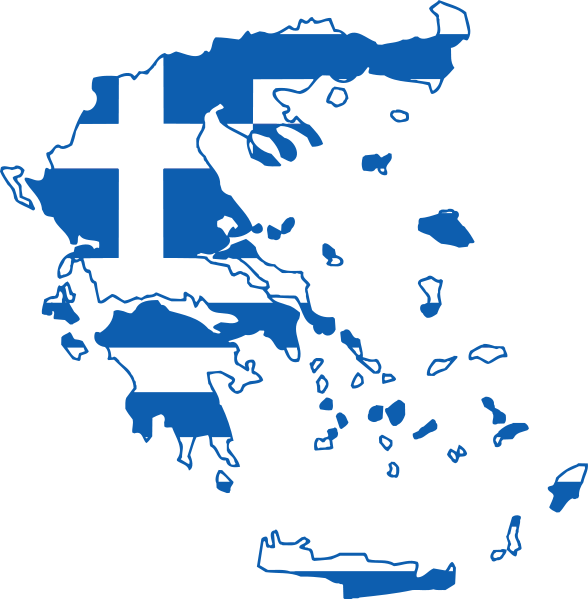Greece has taken a monumental step toward redefining its national defense with the formal announcement of the “Achilles Shield,” a €2.8 billion ($3 billion) air defense initiative that forms the most technologically advanced component of the country’s ongoing €25 billion military modernization program. Unveiled by Prime Minister Kyriakos Mitsotakis in Parliament on April 2, 2025, Achilles Shield is designed as a multi-layered, integrated air defense system capable of countering a wide range of threats including aircraft, ballistic and cruise missiles, UAVs, naval platforms, and even submarine-based threats. Set to be operational by 2027, this ambitious project represents not only a critical modernization effort but also a strategic pivot in how Greece envisions its role in the Eastern Mediterranean and within NATO’s collective defense posture.
Follow Army Recognition on Google News at this link
The Hellenic Armed Forces will deploy the €2.8 billion ‘Achilles Shield’—a multi-layered national air defense system designed to protect Greek airspace against modern aerial threats, including drones, missiles, and aircraft. Scheduled to be fully operational by 2027. (Picture source: Army Recognition Group)
Multiple factors drive the development of the future Greek air defense network “Achilles Shield”, chief among them being the increasing complexity and intensity of regional security challenges. Tensions with neighboring Turkey over maritime and airspace disputes, the growing use of drones and precision-guided munitions in modern conflicts, and the proliferation of ballistic missile technologies have exposed vulnerabilities in Greece’s current air defense setup. These threats demand a networked, layered, and rapid-response system that can operate across multiple domains and simultaneously neutralize various types of attacks.
Currently, the Greek Armed Forces operate a total of 81 surface-to-air missile systems, including 48 long-range platforms and 33 short-range ones. Among the long-range assets are 36 M901 Patriot PAC-2 launchers and 12 Soviet-origin S-300PMU1 systems (NATO designation: SA-20 Gargoyle), the latter of which have become increasingly obsolete. Greece also maintains short-range defenses including 9 Crotale NG/GR, 4 9K331 Tor-M1 systems (SA-15 Gauntlet), and 20 RIM-7M Sparrow missiles integrated with Skyguard fire control units. While these systems have served the Hellenic Armed Forces reliably, they lack the interoperability, reaction time, and multi-role capabilities required to meet current and emerging threats.
As part of a broader modernization effort, Greece is also actively pursuing the replacement of its aging S-300PMU1 systems. According to sources in Greek and international media, the Israeli-made Barak MX system, developed by Israel Aerospace Industries (IAI), is seriously considered the leading replacement. Barak offers a highly flexible, modular air defense solution with interceptors covering ranges from 35 to 150 km, providing protection against drones, aircraft, cruise missiles, and even certain types of ballistic threats. Countries like Germany and Finland have already opted for similar systems, attesting to their reliability and NATO interoperability.
Prime Minister Mitsotakis underscored the strategic value of Israel as a defense partner, noting that systems like Barak can be delivered significantly faster than alternatives from the United States or Europe. “Greece already has the American Patriot systems. If we were to buy new ones, the waiting time would be four to five years. European capabilities are limited. Israel, with which we maintain a strategic alliance, can offer solutions more quickly,” Mitsotakis said. Rapid deployment is a crucial factor as Athens aims to reinforce its air defense network without long delays in operational capability.
Though Israel is currently the front-runner, Greece has also initiated consultations with other NATO-aligned countries to explore complementary or alternative systems for both Achilles Shield and the broader air defense overhaul. France’s SAMP/T NG system, which uses the Aster 30 missile and is capable of ballistic missile defense, presents a viable long-range option. Italy and Norway offer the highly mobile NASAMS system, co-developed with the U.S., which uses AIM-120 AMRAAM missiles and is already operational in over a dozen NATO states. Germany’s IRIS-T SLM, praised for its effectiveness against cruise missiles and UAVs, and the American Patriot PAC-3 MSE system are also under review, although availability and export timelines remain key concerns.
The Achilles Shield program, alongside the planned procurement of the Barak system, reflects Greece’s urgent need to transition from Cold War-era hardware to a digitally networked, multi-threat capable defense ecosystem. With increasing pressure on national security due to shifting geopolitical dynamics, Greece is making a decisive investment in strategic autonomy and regional stability. The integration of modern air defense assets will not only strengthen national sovereignty but also enhance Greece’s contribution to NATO’s eastern flank defense.
This modernization push is not just about equipment; it represents a doctrinal shift. The Achilles Shield is designed as a network-centric defense system that combines sensor fusion, advanced interceptors, and real-time data sharing into a single command-and-control architecture. As threats become more complex and multidimensional, this kind of system is essential for modern military readiness.
As Greece finalizes its supplier selection and moves forward with contract negotiations, the coming months will be crucial for defining the future of its air defense capabilities. What is clear, however, is that with the Achilles Shield, Greece is taking a decisive step toward securing its skies and safeguarding its strategic interests in a rapidly evolving security environment.





